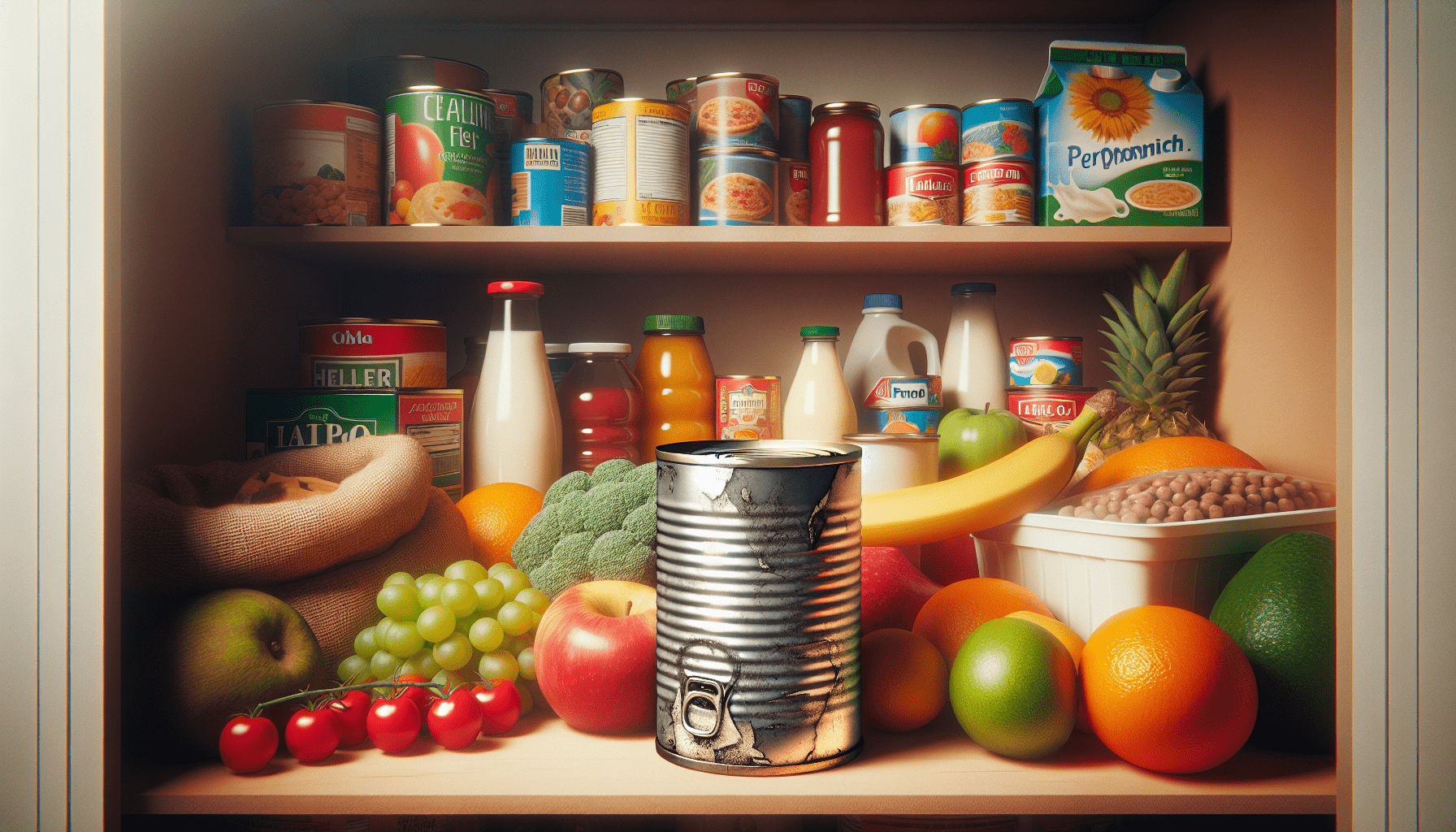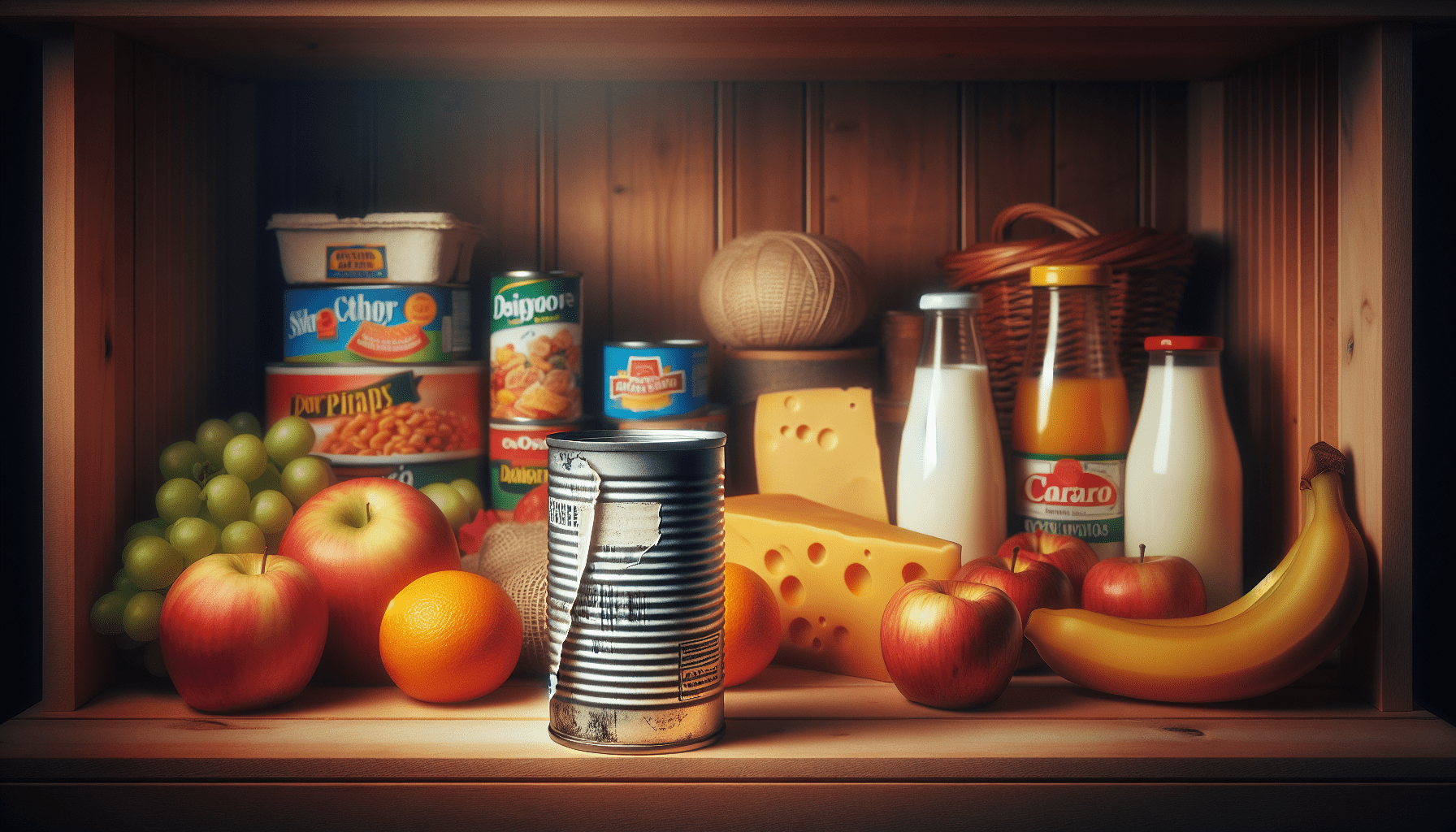Have you ever thought about whether you might be storing the wrong types of food in your emergency supply? Often, when preparing for emergencies, our focus is rightly on gathering essential provisions. Yet, it’s equally important to consider what not to include in your emergency food stash. Understanding this can play a crucial role in ensuring your preparedness efforts are both practical and sustainable. Let’s explore the rationale behind eliminating certain items from your emergency food supply.
The Importance of Choosing the Right Emergency Foods
In times of crisis, having a well-thought-out food supply can make a world of difference to your comfort and survival. The choices you make should prioritize foods that are safe, nutritious, and practical. But what does that mean, exactly? In essence, it means selecting foods that provide adequate nutrition, have a long shelf life, and are easy to store. While many people focus solely on what they need, it’s important to also identify which foods might not serve you well in emergency scenarios.
Why the Wrong Foods Can Be Problematic
Storing the wrong foods can lead to several issues. Foods with short shelf lives may spoil, leading to waste and potential health risks. Others might require cooking methods or additional ingredients that aren’t feasible during an emergency. Some items might cause allergic reactions or exacerbate health conditions under stress. Thus, knowing the pitfalls can help avoid logistical issues and ensure your emergency supply remains efficient and useful.

Foods Actually Best Avoided in Emergency Supplies
Let’s break down some categories and specific items that should ideally not make their way into your emergency stash.
Perishable Items
Any food that requires refrigeration or immediate consumption should be avoided when planning an emergency supply. Fresh fruits, vegetables, dairy products, and meats are common examples. They have a limited shelf life and spoil quickly, making them impractical for long-term storage.
High-Moisture Foods
Moisture in foods can be a breeding ground for bacteria and mold, leading to spoilage. While dried and canned goods can last much longer, foods with a high moisture content like fresh bread or baked goods should generally be consumed promptly rather than saved for emergencies.
Foods Requiring Specialized Storage Conditions
Certain items fare poorly unless stored in ideal conditions. For instance, chocolate is prone to melting unless kept at a stable, cool temperature, making it unsuitable for emergency supplies stored without climate control. Similarly, delicate foods that lose quality when exposed to fluctuating temperatures should be excluded.
Items Needing Extensive Preparation or Additional Ingredients
Foods that require extensive cooking or additional ingredients might not be practical during an emergency. Think pasta that demands boiling water and sauce, or bakery mixes that require eggs or milk. If utilities like gas, electricity, or water are unavailable, such items provide little benefit.
High-Sodium and Sugary Foods
While canned goods are convenient, over-reliance on items high in sodium or sugar can lead to health issues, especially in extended crises. High salt intake can result in dehydration or heart strain, while excessive sugar can lead to energy crashes and poor nutrition.
| Food Type | Reason to Avoid |
|---|---|
| Fresh produce and dairy | Spoils quickly without refrigeration |
| High-moisture content foods | Promotes bacterial growth |
| Chocolate and delicate items | Requires stable temperatures |
| Complex preparation foods | May not be feasible in crisis |
| High-sodium or sugary foods | Can cause health issues in prolonged situations |

Alternative Foods to Consider
Knowing what not to store leads to the question of which alternatives could be more suitable. Here are some food types that fulfill the criteria of longevity, nutrition, and ease of storage.
Dried Goods and Grains
Dehydrated options such as rice, oats, and pasta have lengthy shelf lives and can be prepared easily with just water, making them great staples for your emergency supply. Choose fortified options to increase nutritional value.
Canned Foods
Canned vegetables, meats, and soups offer convenience and durability. They’re designed to last for years and can be consumed straight from the can if necessary. Opt for lower-sodium versions to maintain nutritional health.
Nut Butters and Nutrient-Dense Snacks
Peanut butter and other nut-based spreads are packed with protein and healthy fats, have a long shelf life, and can be consumed without additional preparation. Look for snacks that combine protein, fiber, and healthy fats for a balanced energy source.
Freeze-Dried and Dehydrated Meals
Similar to military rations, these options are specifically designed for long-term storage and require very little preparation. They are lightweight and hold their flavor and texture for years.
Whole Grains and Legumes
Beans, lentils, and whole grains like quinoa provide excellent sources of protein, fiber, and essential nutrients. These items can be calibrated to fit various dietary needs and preferences.

Practical Tips for Managing Your Emergency Food Supply
To ensure your emergency food supply is as effective as possible, consider these practical tips:
Regular Rotation and Check-ups
Regularly rotate your food supplies to ensure you’re using items before they expire. Label your packages with purchase or best-by dates and establish a routine for checking and replacing your stock.
Storage Best Practices
Store your supplies in a cool, dark, and dry location to maximize shelf life. Use airtight containers to minimize exposure to air and moisture, and keep similar items together to streamline access during emergencies.
Special Considerations
If you or your family members have dietary restrictions, allergies, or specific nutritional needs, make sure to account for these in your emergency food supply. This ensures you have safe and healthy options available for everyone during a crisis.

Final Thoughts on Emergency Food Supplies
Building an effective emergency food supply requires careful planning and consideration of various factors. While some items might seem appealing at first glance, removing unsuitable or impractical choices and replacing them with sustainable, nutritious alternatives will better serve you in any situation. Remember, the goal is to have a practical and versatile selection of foods that can support your health and well-being when it matters most.
By spending some time now to thoughtfully select and organize your emergency food supplies, you’re not only preparing for the unexpected but also ensuring peace of mind knowing you’ve prioritized safety and practicality. So take a moment to reassess your current stash and make adjustments with the new insights you’ve gained. You’ll thank yourself in the long run.


